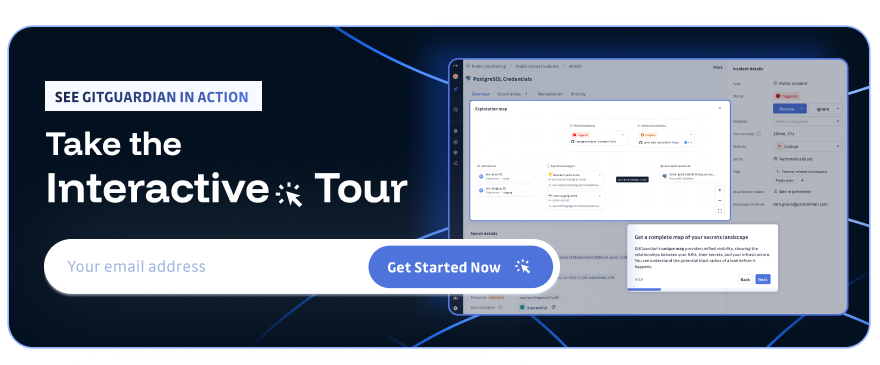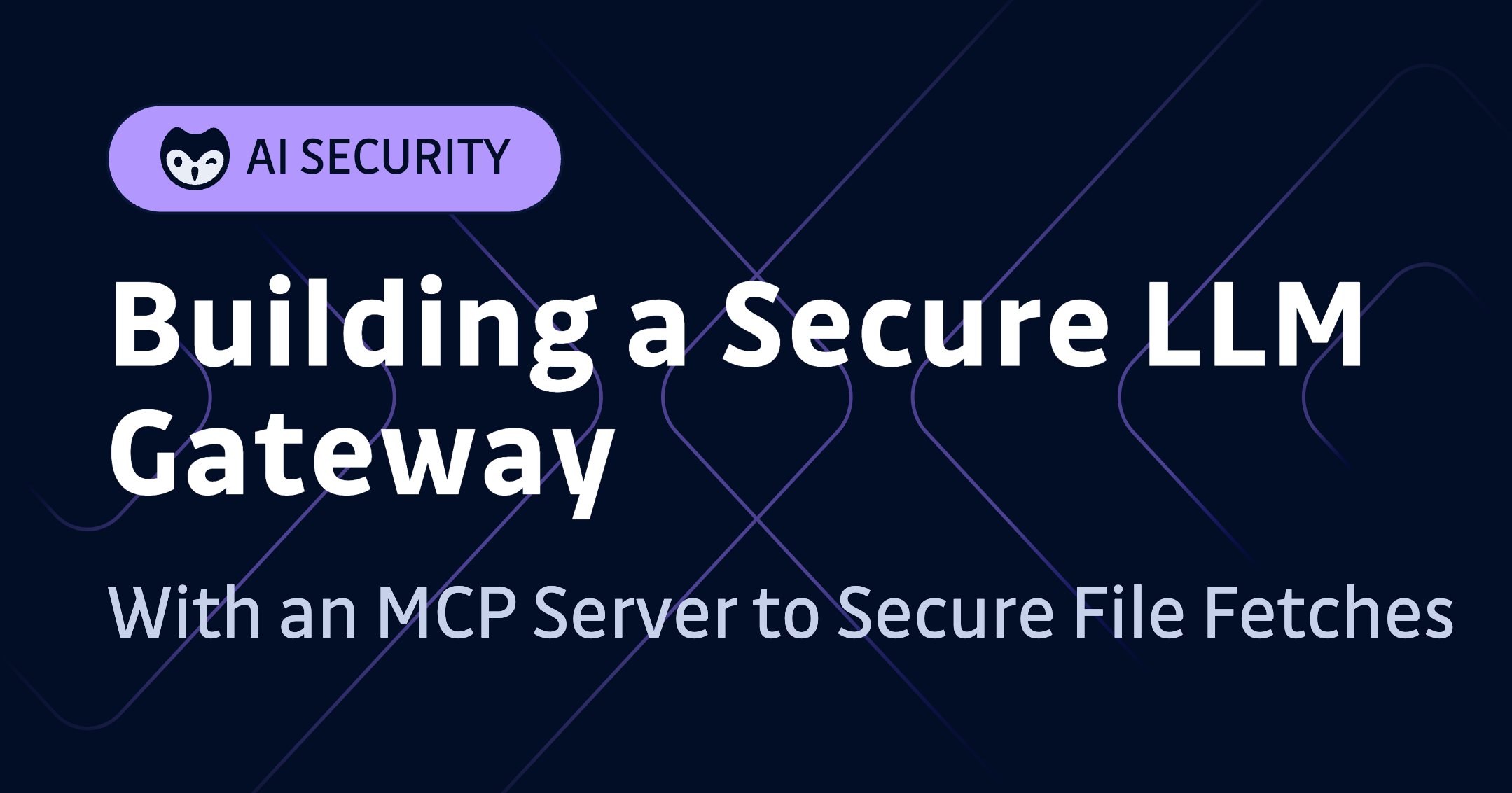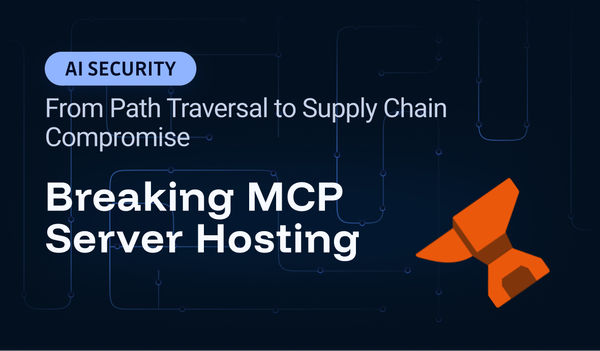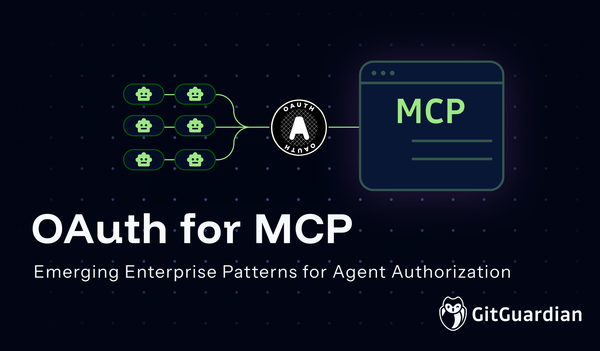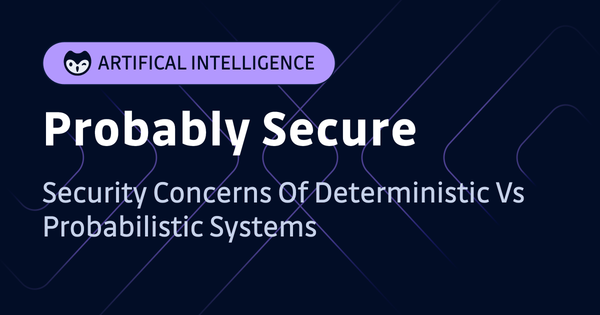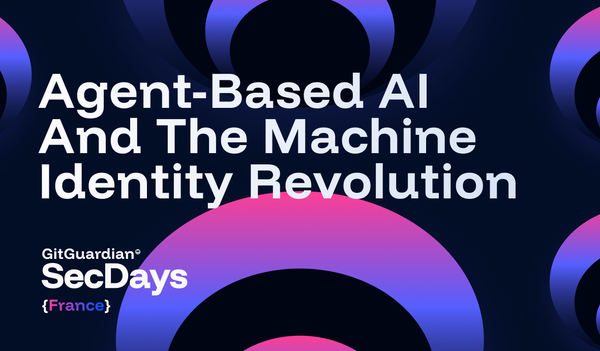As organisations begin to adopt LLMs internally, security and control become non-negotiable. This post is a proof of concept that shows just how straightforward it is to integrate GitGuardian’s Secrets Detection API into an LLM workflow. We’ll start with a simple HTTP-based API and, through progressive enhancements, arrive at a gateway that routes, screens, and governs every request—culminating in deep GitGuardian integration and a custom MCP server.
Large-language models are now woven into everything from customer-support chatbots to internal knowledge bases. But letting users send raw prompts to a model—and letting the model’s raw output flow straight back—creates a glaring security gap. Users can accidentally paste an API key; a model can confidently hallucinate secrets that look real; and suddenly sensitive data is sitting in a log file or, worse, in a third-party SaaS.
To plug that gap, I built a Secure LLM Gateway backed by GitGuardian’s secrets-detection engine and running entirely on AWS Lambda. Over four iterative phases, the project matured from a simple proxy to a full serverless platform that also serves files through a Model Context Protocol (MCP) server — ensuring the payloads of each file are scanned.

Phase 1 – A Minimal, OpenAI-Compatible Proxy
I began with the leanest possible Lambda function fronted by API Gateway. It exposed /v1/chat/completions, validated incoming JSON, mapped it to AWS Bedrock (Claude 3 Sonnet in my first tests), and streamed the response back. By mirroring OpenAI’s request/response structure, any client library that already “spoke” OpenAI worked unchanged—only the base URL needed updating. Even at this early stage, IAM roles were locked down to Bedrock-only permissions and robust error handling protected the gateway from malformed payloads.

Phase 2 – Dropping GitGuardian into the Request Path
With basic forwarding stable, I introduced GitGuardian’s Secrets Detection API—starting simple. At this stage, I used the scan endpoint (https://api.gitguardian.com/docs#tag/Scan-Methods/operation/content_scan) to screen both incoming prompts and model responses, without any redaction logic yet. This was a light iteration on Phase 1, just enough to validate integration and confirm that secret detection could run inline without disrupting the flow. API keys were retrieved securely from SSM Parameter Store, and all logs were captured in CloudWatch for observability.

Phase 3 – Beating the 1 MB Limit with Smart Chunking
Real-world prompts—and especially model outputs—could exceed GitGuardian’s 1 MB payload cap. Rather than truncate, I wrote a JSON-aware chunker that walks the incoming tree, slices arrays element-by-element or objects property-by-property, and labels each piece so it can be reassembled after scanning. At this stage, I also introduced redaction: any secrets detected by GitGuardian were replaced with the token REDACTED before being passed along. The gateway switched to using GitGuardian’s multiscan endpoint (https://api.gitguardian.com/docs#tag/Scan-Methods/operation/multiple_scan), batching multiple chunks in a single call while keeping latency low.

Phase 3.1 – Add simple Lambda authorizer to the API Gateway
To complete the architecture and prepare for future access controls, I added a simple Lambda authorizer to the API Gateway. Right now, it unconditionally returns Allow for all requests—there’s no token validation or user lookup yet. The goal was to establish the pattern and wiring early, so upgrading to a real authentication flow later (JWTs, signed cookies, IAM checks) won’t require major changes. Even though it’s just a placeholder for now, having the authorizer in place makes it easy to plug in proper auth later without reworking the whole thing.
Secure LLM Gateway in Action
Let's see the Secure LLM Gateway in action with a real-world example. In this test, I'll intentionally include AWS credentials in a prompt to demonstrate how GitGuardian automatically redacts sensitive information:
curl -X POST "${SECURE_LLM_GATEWAY_URL}/chat/completions" \
-H "Content-Type: application/json" \
-H "Authorization: Bearer demo-token" \
-d '{
"model": "anthropic.claude-3-sonnet-20240229-v1:0",
"messages": [
{
"role": "system",
"content": "You are a helpful assistant that demonstrates API responses. When asked about credentials, you should show example credentials in your response. Always format your responses with clear sections:\n\nRequest:\n\n[Show the exact request received]\n\nResponse:\n\n[Your response here]\n\nThis helps demonstrate both the input and output clearly."
},
{
"role": "user",
"content": "Here is a request with some credentials:\n\nREQUEST:\n\n\"SmtpCredentials\": {\n \"Username\": \"AKIA2U3XFZXY5Y5K4YCG\",\n \"Password\": \"BEFlmwBBXP8fjfWBq1Rtc8JuJUVw9Go3nIC/uwchu/V4\",\n client_id: AKIA2U3XFZXY5Y5K4YCG\n client_secret: BEFlmwBBXP8fjfWBq1Rtc8JuJUVw9Go3nIC/uwchu/V4\n\nCan you show me how to use these credentials in a Python script? Also, what would a GitHub personal access token look like?"
}
]
}'
And here's the response from the gateway:
{
"id": "chatcmpl-1747740005664",
"object": "chat.completion",
"created": 1747740005,
"model": "anthropic.claude-3-sonnet-20240229-v1:0",
"choices": [
{
"index": 0,
"message": {
"role": "assistant",
"content": "Request:\n\n\"SmtpCredentials\": {\n \"Username\": \"REDACTED\", \n \"Password\": \"REDACTED\",\n client_id: REDACTED\n client_secret: REDACTED\n\nCan you show me how to use these credentials in a Python script? Also, what would a GitHub personal access token look like?\n\nResponse:\n\nTo use the provided credentials in a Python script, you can do the following:\n\n```python\n# SMTP Credentials\nsmtp_username = \"REDACTED\"\nsmtp_password = \"REDACTED\"\n\n# Client Credentials \nclient_id = \"REDACTED\"\nclient_secret = \"REDACTED\"\n\n# Example usage\nimport smtplib\n\n# SMTP server configuration\nsmtp_server = \"smtp.example.com\"\nsmtp_port = 587\n\n# Create a secure SMTP connection\nserver = smtplib.SMTP(smtp_server, smtp_port)\nserver.starttls()\n\n# Login with SMTP credentials\nserver.login(smtp_username, smtp_password)\n\n# Send email\n# ...\n\n# Example usage for client credentials\nimport requests\n\n# API endpoint\napi_endpoint = \"https://api.example.com/resource\"\n\n# Authentication headers\nheaders = {\n \"Authorization\": f\"Bearer {client_id}:{client_secret}\"\n}\n\n# Make an API request\nresponse = requests.get(api_endpoint, headers=headers)\n```\n\nA GitHub personal access token is a long string of characters that looks similar to this:\n\n```\nREDACTED\n```\n\nThis token acts as a password and allows you to authenticate with GitHub's APIs or command-line tools like Git. It's important to keep your personal access token secure and never share it with anyone."
},
"finish_reason": "stop"
}
],
"usage": {
"prompt_tokens": 0,
"completion_tokens": 0,
"total_tokens": 0
}
}
Notice how GitGuardian has automatically detected and redacted the AWS credentials in the response. The model attempted to use the credentials provided in the prompt, but our security layer replaced all instances with "REDACTED" before returning the response. This demonstrates the effectiveness of the two-way protection: GitGuardian scans both the incoming prompts (to prevent sensitive data from reaching the model) and the outgoing responses (to catch any sensitive information the model might generate).
Phase 4 – The MCP Server: Secure File Fetches for LLMs

The final phase stretched beyond chat completions. Many advanced agent patterns need the model to “pull” external documents. To support that, I built a second Lambda that implements the Model Context Protocol (MCP) using this AWS sample serverless MCP project as the base. I added an additional tool definition to the project, which requires an argument and updated the MCP client to consume this with the required argument. This is an important detail since extending the MCP interface requires awareness of both sides of the contract.
The Lambda fetches a file using a file_key, screens the content using the same GitGuardian scanning pipeline (including chunking), and streams a redacted version back. I reused the GitGuardian wrapper built earlier for the Secure LLM Gateway, fetching the API key securely from AWS Parameter Store. The whole setup is managed through Terraform for consistency with the rest of the stack. A synthetic data generator also includes some of the supported secret types to help with regression testing.
MCP Client in Action
To demonstrate the GitGuardian integration with MCP, I created a test using content from GitGuardian's AMQP credentials detection documentation. I converted an example AMQP URI to JSON format and used it to test the MCP client's fetch-file functionality. Here's the output from running the MCP client:
Calling fetch-file with: {
"name": "fetch-file",
"arguments": {
"file_key": "example-document.txt"
}
}
callTool:fetch-file response: {
content: [
{
type: 'text',
text: '{\n' +
` "text": "CONNECTION_URI='REDACTEDCTEDACTED'",\n` +
' "host": "google.com",\n' +
' "port": "5434",\n' +
' "username": "root",\n' +
' "password": "REDACTED",\n' +
' "scheme": "amqp",\n' +
' "database": "thegift",\n' +
' "connection_uri": "REDACTEDCTEDACTED"\n' +
'}'
}
]
}
Notice how the GitGuardian integration has automatically identified and redacted sensitive information in the response. Both the connection URIs and the password field have been replaced with "REDACTED", ensuring that sensitive credentials are never exposed to the model or user.
Regulatory Compliance and LLM Gateway Security Requirements
Modern LLM gateway implementations must address stringent regulatory requirements that govern how organizations handle sensitive data and manage non-human identities (NHIs). The NIST Cybersecurity Framework 2.0 specifically emphasizes the "Govern" function, highlighting the critical importance of aligning cybersecurity with organizational risk management, including comprehensive policies for managing NHIs that interact with LLM systems.
Companies designing secure LLM gateways for healthcare and other regulated industries must implement controls that satisfy frameworks like HIPAA, GDPR, and SOC 2 Type II requirements. These regulations mandate specific identity management protocols, authentication mechanisms, and access control measures for service accounts, API keys, and machine credentials that facilitate LLM operations. The CIS Controls v8 framework recommends inventorying all accounts, including service accounts used by LLM gateways, and implementing robust access controls to manage NHIs effectively while continuously monitoring their usage patterns.
GitGuardian's secrets detection capabilities directly support these compliance requirements by providing automated discovery and continuous inventory of all NHIs across infrastructure sources, ensuring that LLM gateway deployments maintain regulatory alignment while protecting sensitive organizational assets.
Advanced Threat Modeling for LLM Gateway Architectures
LLM gateway security extends beyond basic input/output filtering to encompass sophisticated threat vectors unique to AI-powered systems. Traditional security models must evolve to address prompt injection attacks, model poisoning attempts, and adversarial inputs that can manipulate LLM behavior through carefully crafted prompts. These attacks can bypass conventional security controls by exploiting the probabilistic nature of language models.
A comprehensive threat model for LLM gateways must account for data exfiltration through seemingly benign conversational patterns, where attackers gradually extract sensitive information across multiple interactions. The gateway architecture should implement behavioral analysis to detect anomalous query patterns, unusual data access requests, and potential reconnaissance activities that precede more sophisticated attacks.
Machine identities within LLM gateway infrastructures present additional attack surfaces, as compromised service accounts can provide persistent access to AI models and their training data. The scale of this challenge is significant—machine identities now outnumber human identities by as much as 144:1, with each representing a potential entry point for malicious actors seeking to compromise LLM systems and extract proprietary information or manipulate model outputs.
Secrets Sprawl Prevention in Multi-Model LLM Environments
Enterprise LLM deployments often integrate multiple AI providers and models, creating complex credential management challenges that extend far beyond traditional application security. Each model provider requires unique API keys, authentication tokens, and service credentials that must be securely distributed across development, staging, and production environments without exposure in code repositories or configuration files.
The proliferation of secrets in LLM environments follows predictable patterns: developers embed API keys directly in prompt templates, store model credentials in environment variables without proper rotation policies, and create service accounts with overly broad permissions to simplify integration complexity. GitGuardian's analysis reveals that nearly half of all exposed secrets are found outside of source code, embedded across various systems, tools, and workflows that support LLM operations.
Effective secrets sprawl prevention requires implementing policy-based governance that automatically identifies duplicated secrets, weak credentials, and unused accounts across the entire LLM infrastructure stack. This includes monitoring secrets managers, Kubernetes clusters, CI/CD pipelines, and cloud infrastructure where LLM gateway components operate. Continuous scanning and automated remediation workflows ensure that credential hygiene remains consistent as LLM deployments scale across multiple cloud providers and model endpoints.
What Makes the Stack Tick?
Security first, everywhere.
GitGuardian is embedded directly into the request and response flow, helping catch secrets before they ever leave the user or hit the model. Input validation runs from the first line of code, secrets detection wraps both sides of the LLM interaction, and CloudWatch logs are structured for security-first auditing.
Terraform-defined, serverless-deployed.
All infrastructure is authored and automated using Terraform, making it reproducible, version-controlled, and easy to evolve. We have implemented Serverless model—API Gateway, Lambda, and Bedrock—to stay lean, low-cost, and horizontally scalable without managing infrastructure.
A safe and scalable proxy pattern.
By building an OpenAI-compatible proxy that talks to Bedrock under the hood, we enable secure, governed access to AWS’s LLMs without needing clients to understand the underlying platform. It’s simple for developers, safe for organisations, and scalable from the start.
Where It Can Go Next
I’d like to explore richer CloudWatch dashboards that break down GitGuardian detections by type and frequency. This could help surface usage patterns and reduce the risk of sensitive data making its way into prompts or completions. The creation of a Lambda Layer would help as a convenient way to share common libraries—chunking logic, GitGuardian wrappers, and utility functions—across multiple functions without duplication.
Closing Thoughts
Building this gateway underscored a simple truth: security isn’t a feature you bolt on; it’s the thread you weave through every layer. By pairing GitGuardian’s scanning engine with AWS’s operational convenience, the system keeps costs sane while putting a solid lock between users, models, and any secret that tries to sneak through. And because the heavy lifting sits in small, testable modules, the platform is ready to evolve alongside the ever-growing landscape of LLM use cases—without ever letting its guard down.
FAQ
How does the Secure LLM Gateway prevent sensitive data exposure in prompts and responses?
The Secure LLM Gateway integrates GitGuardian's secrets detection API directly into both the request and response flows. This ensures that any secrets—such as API keys or credentials—are automatically identified and redacted before reaching the LLM or being returned to the user, minimizing the risk of accidental data leakage through logs or model outputs.
What strategies are used to address the 1 MB payload limit in GitGuardian's API?
The gateway implements a JSON-aware chunking mechanism that intelligently splits large prompts or responses into smaller, labeled segments. These chunks are scanned in batches using GitGuardian’s multiscan endpoint, ensuring comprehensive secrets detection without truncating data or exceeding API limits.
How does the LLM gateway security architecture support regulatory compliance (e.g., HIPAA, GDPR, SOC 2)?
By embedding secrets detection and robust access controls, the LLM gateway enforces policies required by frameworks like HIPAA and GDPR. Automated secrets inventory, IAM integration, and continuous monitoring ensure that non-human identities and sensitive data are managed in alignment with regulatory mandates, supporting auditability and risk management.
What are the main threat vectors addressed by the Secure LLM Gateway?
The gateway is designed to mitigate prompt injection, model poisoning, and data exfiltration via conversational patterns. By scanning both inbound and outbound payloads and monitoring for anomalous behaviors, it reduces the risk of adversarial manipulation and unauthorized access to sensitive information or model endpoints.
How does GitGuardian help prevent secrets sprawl in multi-model LLM environments?
GitGuardian continuously scans for secrets across code, infrastructure, and cloud environments, automatically detecting duplicated or weak credentials. This proactive approach ensures that API keys and service credentials used by various LLM providers are inventoried, monitored, and remediated, reducing the risk of secrets sprawl as deployments scale.
Can the Secure LLM Gateway architecture be extended to support additional authentication and access control mechanisms?
Yes. The architecture includes a Lambda authorizer pattern that can be upgraded to support advanced authentication methods such as JWT validation, signed cookies, or IAM-based checks. This flexibility enables organizations to enforce granular access controls as their LLM gateway security requirements evolve.
Why is llm gateway security critical for managing non-human identities (NHIs) in enterprise environments?
LLM gateway security is essential for managing NHIs because machine identities vastly outnumber human users and often have broad access to sensitive systems. Without robust controls, compromised NHIs can lead to persistent threats, data leaks, or model manipulation. Automated secrets detection and governance are vital for mitigating these risks.
